Toronto has a deeper connection to London, England than it does to almost any other city in the world. After all, our entire country was essentially ruled from this place for more than a hundred years. Some of the most important moments in the history of our city happened in this city, nearly six thousand kilometers away. As you walk through the streets of Westminster, or Piccadilly, or Mayfair, you’re likely to pass dozens of hidden connections to the history of Toronto without ever realizing they’re there.
Lots of that history is found in the centre of the city — in the bits you can see in this photo. So I thought I’d explore some of the Toronto stories hidden in the streets of Central London: from the solider who founded our city, to the mayor who rebelled against it, to the moment when Canadian women were finally seen as people. Each number on the map comes with its own story, plus links to full posts about most of them, some other spots in Central London connected to those stories, and a link to find the exact locations on Google Maps.
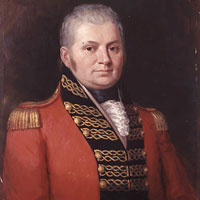 01: SIMCOE’S HOUSE
01: SIMCOE’S HOUSE
We’ll start up here in Marylebone — at 53 Welbeck Street — because this is where the guy who founded Toronto used to live. John Graves Simcoe rented this place in the very late 1700s, just after he got back from being the first Lieutenant Governor of Upper Canada. For the most part, he lived at his country estate in Devon, but he needed a place in London too. He spent a lot of time here, trying to convince the government to invest more money in the Canadian colony. He was sure the Americans were going to invade — which, of course, they soon did — and Toronto was still just a muddy little frontier town. Upper Canada was vulnerable. The new province, Simcoe argued, needed more soldiers, defenses and infrastructure.
The government ignored his pleas. But they did eventually give him a big promotion: Commander-in-chief of the British army in India. Sadly, Simcoe didn’t live to see his first day on the job. War with Napoleon got in the way. On his trip to the front, Simcoe fell ill. He died soon after.
Find on Google Maps
+ The British Museum (big green roof about halfway between 08 and 09): Simcoe’s wife Elizabeth kept a vital, detailed record of their trip to Canada: a diary, sketches and watercolours. Some of that work eventually ended up here, in the collection of the British Museum.
+ Cork Street (near 04): Elizabeth Simcoe’s diary ends with a final line when they get back home to England: “Arrived at the hotel in Cork Street, London, at ten o’clock.”
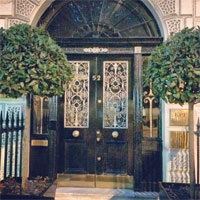 02: LADY ST. HELIER’S SALON
02: LADY ST. HELIER’S SALON
In the early 1900s, 52 Portland Place was the place to be. And that’s because it was home to one of London’s most influential aristocrats: Lady St. Helier. She was a Baroness, a writer, a philanthropist, even an alderman on the City Council. The guestlists at her parties featured some of the greatest writers and most important politicians in all of England: everyone from Oscar Wilde to Winston Churchill. She also changed Billy Bishop’s life.
It was a strange coincidence that brought them together during the First World War. This was back before Bishop was a famous pilot; he was just another Canadian solider who had drunkenly fallen down the stairs of the Savoy Hotel on leave. He ended up in the same hospital where Lady St. Helier volunteered. And when she saw his name, she remembered meeting his father at a reception in Ottawa years earlier. She insisted that Bishop spend the rest of his time recovering at her own home, where they quickly became as close as family. When she learned that he wanted to become a pilot, it was Lady St. Helier who pulled the strings to make it happen. And by the end of Bishop’s first week in the cockpit, he’d already shot down five German planes and earned the title of “ace”.
READ MORE: “Billy Bishop and the rich and famous”
Find on Google Maps
+ Lady Carnarvon’s Hospital for Officers (on Bryanston Square, just to the left of the photo): The hospital where Bishop met the Baroness is still there today. It’s a prep school now. It was run by the woman who owned the mansion we call “Downton Abbey”. In fact, her hospital inspired the hospital storyline on the show.
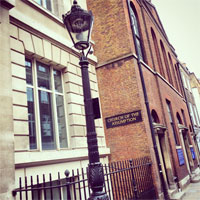 03: THE CHURCH OF THE ASSUMPTION
03: THE CHURCH OF THE ASSUMPTION
William Kurelek was one of the most popular artists in Canadian history. His paintings of snowball fights, lumberjacks and Prairie fields hang in the National Gallery, the Parliament Buildings, the AGO, and on kitchen walls all across our country. But he was also deeply depressed, haunted by nightmares and visions. So, after he graduated from art school in Toronto, he headed across the ocean to check himself into a cutting-edge psychiatric hospital in London. During his years in England, Kurelek painted some of his most striking and disturbing images, suffered through a series of electroshock treatments, attempted suicide, and eventually found God, becoming a devout Catholic.
This spot, just around the corner from Carnaby Street, is where he started to hang out. He joined a Catholic social club here at the Church of the Assumption. He said it helped him to become “a happier, more glad-to-be-living sort of person.” When he returned home to Toronto, religious themes became one of the most important parts of his work; while he was living in the Annex, he even created a series of 160 paintings depicting the Passion of Christ. But his nightmare visions never left him. Kurelek spent the rest of his life expecting a nuclear holocaust to begin at any moment, heralding the arrival of a Biblical apocalypse.
READ MORE: “An apocalypse in the Beaches — the nightmare visions of William Kurelek”
Find on Google Maps
+ Blue Ball Yard (a few doors below 05): Kurelek got a job here, making picture frames. The experience would help him back in Toronto: getting another framing gig to support himself and making the frames for his own paintings himself. You can check out a bunch of them at the AGO.
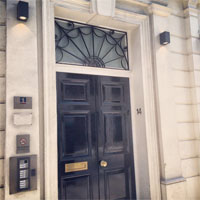 04: THE CANADIAN WAR RECORDS OFFICE
04: THE CANADIAN WAR RECORDS OFFICE
14 Clifford Street is an important address in the history of Canadian art. During the terrible days of the First World War, this is where you would have found the headquarters of the Canadian War Records Office. The organization had been founded and financed by Lord Beaverbrook — a Canadian newspaper baron turned British politician — to record the Canadian experience of the war. Artists and writers were pulled out of the trenches and given paintbrushes and pens instead of guns and ammunition. Some of our country’s most famous artists were hired as part of the project: authors like Wyndham Lewis and Charles G.D. Roberts, sculptors like Frances Loring and Florence Wyle, painters like the Group of Seven’s A.Y. Jackson, Fred Varley and Arthur Lismer.
In fact, this was back before the Group of Seven were even calling themselves the Group of Seven. And their work for the War Records Office helped turn them into stars. In Canada, they were being dismissed as “The Hot Mush School.” Critics called their work “a horrible bunch of junk” and “daubing by immature children.” But when the war ended, their work was exhibited at Burlington House — on Piccadilly Road just a couple of blocks south of the War Records Office. The English critics loved them, helping to lend them more than a little bit of credibility when they headed back home to Toronto. Soon, they were being hailed as the greatest artists our country has ever produced.
READ MORE: “England loved the Group of Seven before Canadians did”
Find on Google Maps
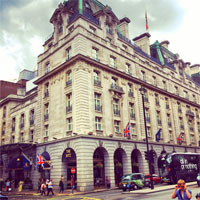 05: THE RITZ
05: THE RITZ
Just a few doors down Piccadilly Road from the spot where the Group of Seven’s war paintings once hung on the walls, stands one of the most famous five-star hotels in the entire world. This is the Ritz. And in 1920, just a few months after the War Records exhibition, one of the most famous Torontonians of all-time was staying here. Mary Pickford was on her honeymoon. And it was causing riots.
Pickford had been born on University Avenue (where Sick Kids is now) and started her career as a young girl on stage at a theatre on King Street. But by the time 1920 rolled around, she’d become one of the most famous icons in Hollywood history. And she’d just married another one: Douglas Fairbanks. London was the first stop on their honeymoon. The English public, starved for good news after the horrors of the war, went crazy for them. Crowds packed the streets for miles in every direction around the hotel. Even the King himself couldn’t get through. Every time Pickford and Fairbanks stepped outside or tried to go anywhere else, the newly-wed couple risked getting crushed to death. No one had ever seen anything like it. Some say that trip to London marked the very beginning of modern celebrity culture.
READ MORE: “Mary Pickford’s nightmare honeymoon”
Find on Google Maps
+ Waterloo Station (the big silver thing in the bottom-right corner): The first sign of trouble came when their train arrived in London. Huge crowds gathered to greet the couple and their carriage could barely push through the excited fans.
+ The Alhambra Theatre (on Leicester Square, a block to the left of 12): When Pickford and Fairbanks came to see a play here, the crowds made them late. When they finally did arrive, the performance was interrupted by a ten-minute standing ovation for the couple. Fairbanks was forced to give a speech from their seats in the Royal Box before the play was allowed to continue.
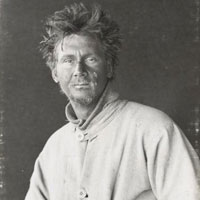 06: BRITISH ANTARCTIC EXPEDITION HEADQUARTERS
06: BRITISH ANTARCTIC EXPEDITION HEADQUARTERS
In 1909, one of the most famous explorers in all of British history opened an office here on Victoria Street. Sir Robert Falcon Scott was planning an expedition to Antarctica; if all went to plan, he would become the very first person to ever reach the South Pole. And he was looking for a few good men willing to join him on his adventure. One of the hopeful candidates was Charles Seymour Wright. He’d grown up in Toronto and was now studying physics at Cambridge. When Scott rejected his initial application, Wright refused to take no for an answer. So he walked all the way here to Scott’s office. From Cambridge. A hundred kilometers away. Scott was so impressed that he changed his mind and hired the young Canadian. When Scott’s ship sailed south, Wright was on board. And he wasn’t the only Torontonian, either: Thomas Griffith Taylor was an Australian who would eventually go on to found the Geography Department at U of T.
But the expedition proved to be a disaster. Scott and a few men made it all the way to the Pole only to discover they’d been beaten there by a team of Norwegians. On their long march back to camp, all the men in the polar party died. It was Wright who found the bodies — along with the dead men’s diaries, full of the chilling details that helped to cement the expedition as the most iconic tale from the Heroic Age of Antarctic Exploration.
READ MORE: “Toronto’s first great Antarctic explorer”
Find on Google Maps
+ Waterloo Place (right near 08): There’s a statue of Scott here, in the shadow of the Duke of York Column.
+ The Natural History Museum (a couple of km to the left of the photo): On the way back from the South Pole, the doomed men stopped to collect rock samples. They still had them with them when Wright found the bodies. Today, you can see some of those rocks on display at the Natural History Museum.
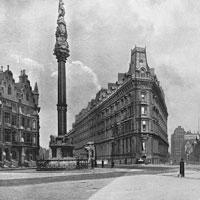 07: THE WESTMINSTER PALACE HOTEL
07: THE WESTMINSTER PALACE HOTEL
It was on this spot, right across the street from Westminster Abbey, that the Westminster Palace Hotel once stood. It was one of the grandest hotels in all of London — the very first, in fact, to have an elevator. And it was here, in a big room on the main floor, that one of the most important events in Canadian history happened. In 1866, delegates from all over the Canadian colonies met here to hash out the final details of Confederation. It was in this hotel that they drafted a bill the British parliament would eventually approve, turning Canada into a country.
At night, the Fathers of Confederation would retire to sleep in their rooms upstairs. So that’s where Sir John A. Macdonald was when he drunkenly fell asleep one night while reading the newspaper. He woke up in flames. His bed, his sheets, his curtains, his nightshirt were all on fire. He leaped to his feet and smothered the flames as Sir George Étienne-Cartier rushed to his rescue from the room next door. It was a close call; Macdonald was lucky to survive. And just eight months later, he officially became the first Prime Minister of Canada.
READ MORE: “Sir John A. Macdonald, drunk and in flames”
Find on Google Maps
+ The Athenaeum Club (just above 08): Sir John A. was an honourary member of the Athenaeum, one of the most exclusive gentlemen’s clubs in the world. Other members have included everyone from Darwin to Dickens to Churchill.
+ Bond Street (runs along the left of 04): The fire and Confederation weren’t the only life-changing events on Macdonald’s trip. One day while walking down the street, he ran into an old friend from Canada. Within weeks, Macdonald and Susan Agnes Bernard were engaged to be married.
+ St. George’s, Hanover Square (just above 04): The wedding happened here, at one of the most prestigious churches in London. Twenty years later, Teddy Roosevelt would also tie the knot at St. George’s. And the church even pops up in My Fair Lady.
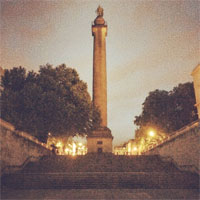 08: THE DUKE OF YORK COLUMN
08: THE DUKE OF YORK COLUMN
In the aerial photograph above, it looks like nothing more than a thin brown line, just to the right of the number 08. But from the ground, it’s massive. The column soars 12 storeys into the air. The statue on top weighs more than 16,000 pounds. It was built in the early 1800s to honour a prince born just down the street at St. James’ Palace — the son of “Mad” King George III. In the days of the wars against Napoleon, the prince was in charge of the entire British military. Mostly, he’s remembered for being inept and for the time he got mixed up in one of the most notorious sex scandals in British history. But in the end, his name was cleared and every single soldier in the British army gave up one day’s pay to build him this column right in the middle of London.
His name was Prince Frederick. But he was better-known as the Duke of York. And when he won a big victory against the French in the late 1700s, the news spread all the way across the ocean and up the St. Lawrence to the brand new province of Upper Canada. Eventually, it reached the northern shore of Lake Ontario, where the Lieutenant Governor, John Graves Simcoe, had just founded a muddy little frontier town to serve as his capital. To honour the Duke’s big victory, Simcoe gave his town a new name: York. Two hundred years later, the name of that prince is still plastered all over Toronto: from York to North York to East York to Fort York to York Street to York University to York Mills to the York Club to Royal York Road.
READ MORE: “The guy Toronto was originally named after — and his big sex scandal”
Find on Google Maps
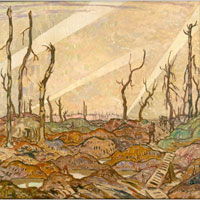 09: A.Y. JACKSON’S STUDIO
09: A.Y. JACKSON’S STUDIO
The Group of Seven’s most famous studio is in Toronto: in the Rosedale Valley, just a few blocks from Yonge & Bloor. That’s where A.Y. Jackson shared a space on the top floor of the Studio Building with Tom Thomson, becoming fast friends in the days before the Group of Seven became famous. But when the First World War broke out, Jackson volunteered, heading to the blood-soaked trenches outside Ypres. The war took a terrible toll on the painter. When he ran into a fellow member of the Group, Fred Varley, his friend was deeply worried about him. “I’m sure if he had to go through the fight any more,” Varley wrote in a letter back home, “he would be broken.” And things were only getting worse: Jackson was wounded during a German bombardment, received word from back home that Thomson had died mysteriously in Algonquin Park, and his unit was headed toward mutiny and the slaughterhouse of the Battle of the Somme.
Jackson was saved at the best possible moment: while digging a latrine as he recovered from his wounds. An officer came to tell him that the Canadian War Records Office was looking for artists. They wanted Jackson to come work for them. He spent the rest of his war traveling across the Western Front sketching the devastation and then returning here, to his studio on Charlotte Street, to turn them into full paintings. No artist produced more work for the Canadian War Records Office than Jackson did. And his paintings for them helped to establish his reputation as one of the most promising artists in Toronto.
READ MORE: “A.Y. Jackson goes to war — The Group of Seven on the Western Front”
Find on Google Maps
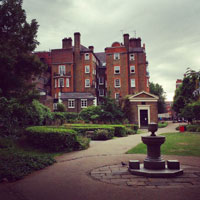 10: THE REBEL MAYOR
10: THE REBEL MAYOR
Just a couple of years before he became the first Mayor of Toronto, William Lyon Mackenzie was living right near here — on Wakefield Street. He was in London to find a peaceful solution to the political crisis sweeping Upper Canada. Back home in Toronto, he was desperately fighting to pass democratic reforms. But the Tories of the Family Compact were opposing him at every turn: they threw him out of his seat in the legislature, burned him in effigy, attacked his home and business, beat him half to death in the street. Still, he was hopeful; he was sure the British government would to listen to reason. So in 1832, Mackenzie came to London to formally present a long list of grievances on behalf of Upper Canadians. He spent a year living here with his family, presenting petitions to the Colonial Office and staying up all night writing lists of his complaints. He even taught himself to write with both hands so he could switch from one to the other when he started getting tired.
But none of it worked. In the end, the British did ignore his complaints. And when Mackenzie returned home to Toronto, he was more radical than ever.
READ MORE: “William Lyon Mackenzie’s mission to London”
Find on Google Maps
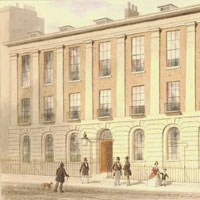 11: THE CROWN & ANCHOR TAVERN
11: THE CROWN & ANCHOR TAVERN
While Mackenzie was in London, England was seized by its own battle over democratic rights. And over here on the Strand, you could find one of the hotbeds for radical politics: the Crown & Anchor Tavern. In the late 1700s and early 1800s, some of the biggest names in Britain came here to drink and to argue, to hold meetings and to give lectures: people like Samuel Taylor Coleridge, Samuel Johnson, and William Hazlitt. Hundreds — sometimes even thousands — of Radicals and Reformers would gather here, listening to speakers, holding meetings, or throwing a party when someone was finally released from jail. They even printed some of the very same radical texts Mackenzie was printing in his newspaper back home in Toronto. The Crown & Anchor became synonymous with the campaign for democratic reform.
But there was lots of space at the tavern. Not everyone who held a meeting here was a radical. Far from it. And in the very late 1700s, the tavern was home to a series of meetings by the most famous secret organization in the world: The Freemasons.
In 1792, they met here to make an important decision. The British had just created a new province in Canada, which meant a new branch of the Masonic Lodge and a new Provincial Grand Master to run it. To fill the post, they picked an American who’d been driven out of the United States for fighting on the British side of the American Revolution. He was one of Simcoe’s men. Soon, he would be joining his old commander on the trip to Upper Canada. His family would become one of the founding families of Toronto. And in time, as leading members of the conservative Family Compact, they became Mackenzie’s arch-rivals. Two hundred years later, people in Toronto still recognize the family name: the man’s name was William Jarvis.
READ MORE: “The Jarvis Family: 60 Years Fighting Revolutionaries and Radicals — And How It All Backfired”
Find on Google Maps
+ St. George’s, Hanover Square (just above 04): William and Mary Jarvis got married here while they were in London: at the very same church where Sir John A. Macdonald would get married decades later.
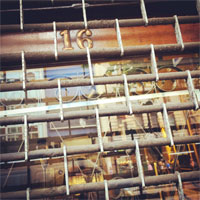 12. THE RADICAL TAILOR OF CHARING CROSS
12. THE RADICAL TAILOR OF CHARING CROSS
One of the most influential Radicals in England was a man by the name of Francis Place. He was a tailor by trade, with a shop here at 16 Charing Cross, just around the bend from Trafalgar Square. His backroom had been turned into a library filled with revolutionary ideas. The shop was ground zero for radical politics in England, where politicians and protesters alike came to discuss the ideas they were fighting for. And while Mackenzie was living in London, he too was invited into the backroom here, exposed to some of the most revolutionary ideas in England.
This was a very dangerous time. During Mackenzie’s year in London, he watched the battle over a bill called the Great Reform Act plunge England into crisis. At the height of the fight, shops and factories shut down. Political unions mobilized. Huge crowds gathered in protest. There were riots. Mackenzie himself saw the Tory Prime Minster — the Duke of Wellington, the hero of the Battle of Waterloo — pelted with fish heads and mud in the street. Francis Place was one of the leaders of the unrest: his angry posters were plastered all over London; he organized a run on the banks that threatened to bankrupt the nation. And he was willing to go even further than that: if the Tories didn’t back down and allow democratic reform, Place would have no problem helping to lead an armed revolution.
In the end, the bill did pass. Mackenzie was there that day in the House of Lords to watch it happen. But the British government refused to bring similar reforms to Upper Canada. And when Mackenzie returned home to Toronto, not only had he lost his faith in the British system, he’d also been exposed to some pretty radical and violent ideas. Within a few short years, he’d be leading his own army down Yonge Street, trying to overthrow British rule in Canada.
Find on Google Maps
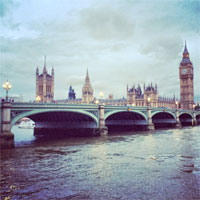 13: WESTMINSTER BRIDGE
13: WESTMINSTER BRIDGE
The Victorian age officially began a little after noon on a Thursday: June the 28th, 1838. That’s when the Imperial Crown was placed upon the young queen’s head. And at that exact moment, one of the most fascinating scientists in the history of Toronto was standing right here: in the middle of the old Westminster Bridge.
Sir John Henry Lefroy was just a young solider back then — tasked with passing the signal along from Westminster Abbey to the crowds at the Tower of London when the big moment arrived — but he had a long and interesting life ahead of him. His scientific curiosity would eventually bring him to Canada, where he was in charge of Her Majesty’s Magnetical and Meteorological Observatory at Toronto. It was part of an Empire-wide project to figure out why the magnetic field kept changing. And while he was here, Lefroy left a lasting legacy in Toronto. He co-founded the Royal Canadian Institute. And thanks to a famous trip to the Northwest Territories, he became the subject of what is now the most expensive painting in Canadian history: Paul Kane’s Scene in the Northwest: Portrait of John Henry Lefroy. More than 175 years after he stood on the Westminster Bridge at the dawn of a new age, you can now find Lefroy on the walls of the AGO.
READ MORE: “Sir John Henry Lefroy & Queen Victoria’s Coronation”
Find on Google Maps
+ Cambridge Terrace (right side of the big park at the top of the photo): After getting back to England, Lefroy became a major figure in the administration of the Empire, including Governor of Bermuda and Director of Ordnance for the army. He lived here, in the swanky Cambridge Terrace, looking out over Regents Park.
+ St. Martin-in-the-Fields (on Trafalgar Square, the big square to the bottom-left of 12): As a baby, Lefroy was baptized here, in this church, by the Bishop of London.
+ St. George’s, Hanover Square (just above 04): Lefroy also got married here, just like Sir John A. Macdonald and William Jarvis did.
+ The Egyptian Hall (on Piccadilly Road, a couple of blocks below 04): One of the most important moments of Paul Kane’s life happened here, too. The young artist from Toronto saw a lecture at the Egyptian Hall by the American painter George Caitlin. Caitlin had dedicated his life to painting the people of the First Nations (sometimes very inaccurately). Kane was so inspired, he decided to do the same thing in Canada.
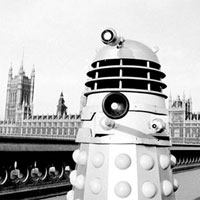 14: THE DALEK INVASION OF EARTH
14: THE DALEK INVASION OF EARTH
It was a guy from Toronto who created Doctor Who. Sydney Newman worked at the NFB and the CBC before eventually landing a gig in England as Head of Drama for the BBC. He’d been a big science-fiction fan growing up in Toronto, so one of the first things he did at his new job was to assemble a groundbreaking team — including the first woman producer in BBC history, as well as the first Indian-born director — to make a new show about a strange old man who travelled through time and space in a police box. It would prove to be one of the most successful television programs of all-time.
And that was in large part thanks to the Daleks. The genocidal aliens — giant salt-shakers armed with toilet plungers — were featured in the second story Doctor Who ever told. And they were a smash hit. At first, Newman wasn’t pleased. He wanted the show to be educational. He didn’t want any “bug-eyed monsters.” But he quickly changed his tune. In the second season of the show, the Daleks were back in a serial that included one of the most iconic moments in British television history: the invading aliens rolled across Westminster Bridge during the Dalek invasion of Earth.
READ MORE: “The Torontonian roots of Doctor Who — the Canadian behind the legendary TV show”
Find on Google Maps
+ BBC Broadcasting House (to the bottom-left of 02): The old BBC headquarters, where Newman used to work, are way off to the left of this photo. But the brand new headquarters are on Regent Street where, more than 50 years later, they still boast Doctor Who as one of the most popular parts of their schedule.
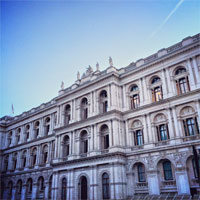 15: THE COLONIAL OFFICE
15: THE COLONIAL OFFICE
We end here, in Whitehall, just down the street from the Houses of Parliament. Because once upon a time, this building was the very heart of the British Empire. Today, they call it the Foreign & Commonwealth Office, but it used to be known as the Colonial Office. For more than a century, this is the spot where Canada was essentially ruled from. As a result, some of the most important moments in Canadian history happened right here. Many of the most powerful and important Canadians have sailed all the way across the Atlantic to come to this spot: all in the hope of getting a meeting with the British bureaucrats who ran this place. They waited long hours in reception, presented petitions, negotiated with our imperial overlords… sometimes they were turned away altogether. Some of them had names that are still familiar to Canadians today: Sir John A. Macdonald, Sir George-Étienne Cartier, William Lyon Mackenzie, Sir Sandford Fleming, Robert Baldwin…
But maybe most important of all, this is where the Privy Council used to meet. And even though they were all British judges, they served as the court with the highest authority over Canadian law. Higher even than the Supreme Court of Canada. So it was in this building in 1929 that the British judges on the Privy Council overruled the Canadian courts: they declared that women are, in fact, persons. To this day, it’s one of the most famous and important moments in the history of our country — even if it happened six thousand kilometers away.
READ MORE: “Three Dreams in the Heart of the British Empire”
Find on Google Maps
A version of this post originally appeared on the The Toronto Dreams Project Historical Ephemera Blog.
The original photo was taken by Wikimedia Commons user Stevekeiretsu in 2006. You can find it here. I’ve cropped it and adjusted the contrast and colour balance.

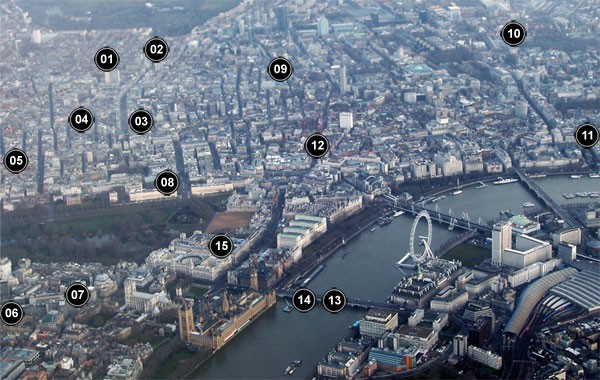

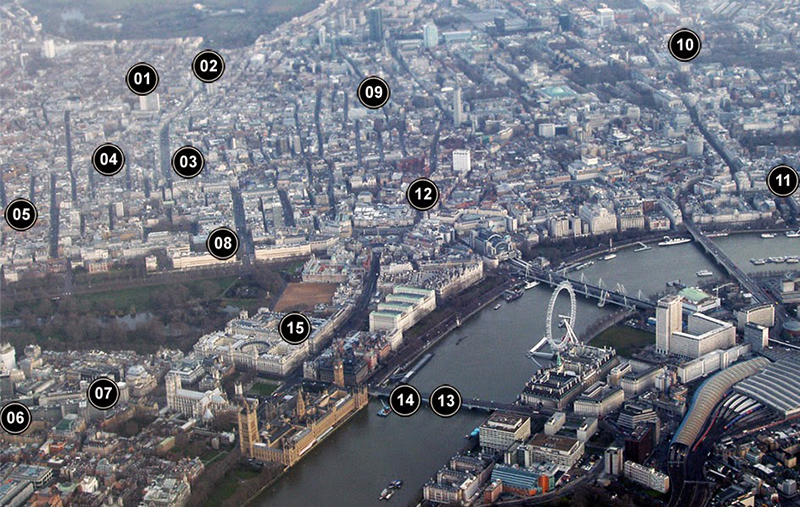



2 comments
Fascinating article. One of the best ones done yet. Satisfies my love for Toronto, Canada , London and England. Thanks.
This is a great article. As I am a history teacher this will definitely be part of the rotation.
Cheers, Moaz